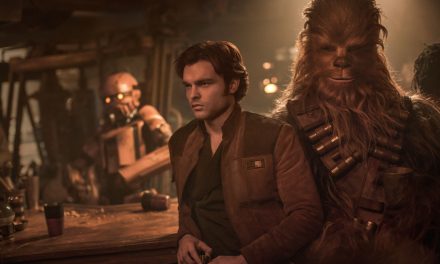Season 2 of The Mandalorian kicked off this past Friday on Disney+ with a bang. You can check out our review here, but I do not know of many people that walked away disappointed. The story may not have moved much, but Favreau once again showed his ability to tell a tight story and entertain to no end; However, one aspect of this first show jumped out more than any other. The cinematography and special effects set a new bar in excellence, even over last season!
A New Bar in Excellence – A New Age

Go back in time. Watch any show from the 80’s and pay attention to their special effects. While movies like Tron broke huge ground when it released, in today’s world it looks like a video game run on a watch. Some shows aged badly, and some hold together enough to at least make it tolerable. My son often comments on not being able to watch the original Star Wars trilogy because the special effects are so awful. It may sound like heresy, but he’s right compared to what comes out of Hollywood today.
If you have not done so already, you really need to go to Disney+ and watch Disney Gallery: The Mandalorian. Amongst much more, it shows how Favreau uses breaking edge technology to film. For many of their shots they essentially film in front of a giant wrap around television screen. It provides the look and the lighting for the shots while being cheap to use. It proved very effective for the close visuals of season 1.
A New Bar in Excellence – Then Comes Season 3
Re-watch season 1 and notice most of the filming stays pretty tight to both actors and sets. There are a few wide shots, but the focus stays tight. Episode 1 for this season comes out of the gate and instantly serves up wide shots and distance shots galore.
Once the Tuskens and Mos Pelga population team up, Favreau shows multiple shots of panned out, widescreen images that look almost Imax in quality. We know how they are achieving these shots, but with only one or two exceptions, the integration of the visuals with practical filming are near seamless. Once the season ends, they will explain their filming process, but if the average viewer answered the question, “Did this crew shoot on location in Tunisia, or on a soundstage?” the overwhelming majority would say Tunisia. With the rolling dunes and mountainous hills this episode looks near identical to the shooting A New Hope did in the sandy country.
A New Bar in Excellence – Enter The Dragon

Then of course comes the Gold Star winner – the Krayt dragon. While a select few still whine about it not looking like the legends versions of the dragon, its size and scope boggle the mind. This should be a small time streaming show, yet it cranks out special effects worthy of a big screen mega-blockbuster. Compare shows like The Next Generation to the Battlestar Galactica reboot and it becomes obvious the jumps in technology that have occurred, but the Krayt is ridiculous!
For those complaining about the change in appearance, I can tell you it comes down to logistics. The difference between rendering a fully articulate lizard versus a worm are enormous. I would not be surprised if that determined the design alone. Although, people should note the Krayt still sported a lizard’s head and jaw. A great comparison would be the legless lizard. Either way the simple fact creators could create such a massive creature and use it to interact with cast members boggles the mind!
To be honest, the little things impressed me just as much as the Krayt. The Tusken Massiffs and tiny scurriers looked far more real and detailed then they ever did in the movies, and some shots zoomed in pretty close.
A New Bar in Excellence – Setting a Precedent?
Obviously The Mandalorian sets a bar on which all other Star Wars and Marvel streaming shows will be judged. If Mandalorian can do this and Kenobi comes out with effects that look like they come from the 90s, fans will revolt. Think about this for a moment. Season 1 of The Mandalorian ran roughly $15 million per episode. I do not think saying season 2 runs about $20 million would shock anyone, but take a look at this:
Rise of Skywalker: 2hr 21 min – $275 million
Solo: 2hr 15 min – $275 million
The Last Jedi: 2hr 32 min – $317 million
Source: Boxoffice Mojo
The last three movies ran for seven hours and 8 minutes at a total combined cost of $867 million. What Favreau created in roughly 7.5-8 hours (assuming 8 episodes once more) cost anywhere from $120 million to $160 million. Star Wars going forward can now churn out the same movie quality 8 hours for roughly $727 million less! Of course the one flaw in this comes from space. Note The Mandalorian has not and most likely will not include any space battles consisting of thousands of ships, but still. Tell me these types of evolutionary effects are not huge!
While we can be assured Jon Favreau will continue to generate amazing story content, we can also be assured his use of new special effects will continue to push the envelop in the episodes ahead.





